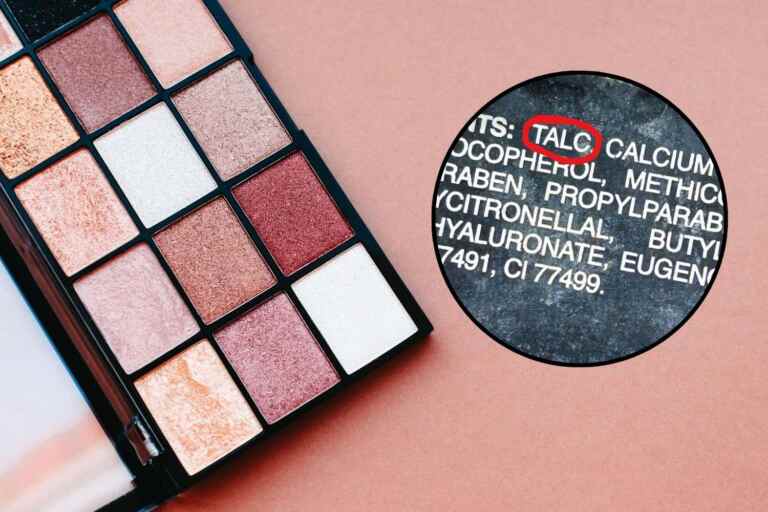Talc, long used in cosmetics, is now under scrutiny in EU and US. Europe may ban it by 2027; the US proposes mandatory asbestos testing under MoCRA. Consumers can choose talc-free products now.

Table of contents
Talc is one of those sneaky ingredients that lurks in our everyday products—often without us realizing. For years, experts have focused on the risk of asbestos contamination, a well-known carcinogen that can infiltrate talc during mining. But lately, alarm bells are ringing about the talc itself—potentially carcinogenic even when “pure.”
In July 2024, the International Agency for Research on Cancer (IARC) upgraded its stance, labeling talc as “probably carcinogenic to humans” (Group 2A), placing it alongside asbestos-contaminated talc, which had already been recognized as carcinogenic since 2009. The Risk Assessment Committee (RAC) of the European Chemicals Agency (ECHA) later proposed listing talc as a Category 1B carcinogen—meaning it’s presumed to cause cancer in humans.
The EU hasn’t issued a final decision yet, but one could come as early as early 2026. In the meantime, questions remain: Where does talc hide in our daily lives? And when might a formal ban take effect?
Talc in common cosmetics
Talc is a mineral chameleon: it absorbs moisture, gives skin that silky feel, and boosts the texture of powders. A trip to your bathroom shelf—or a peek at your friends’ makeup bags—shows it’s still omnipresent.
In a light (yet telling) survey of cosmetics at home and among friends, talc popped up front and center on ingredient lists of trusted products: blushes, compact powders, eyeshadow palettes by brands like Debby, Benefit, Essence, Catrice, Nyx, Revolution. When “Talc” is at the top of the INCI list, it’s usually the main ingredient—hard to ignore.
From baby care to bronzers, talc has carved out its niche—but its prevalence makes the regulatory debate all the more urgent.
When could a ban take effect?
The RAC’s recommendation has landed on the desks of the European Commission and member states. If the classification is confirmed, experts expect a ban on talc in cosmetics to be in place by the end of 2027, once the usual implementation times are factored in.
Meanwhile, many brands aren’t waiting for the law—they’re already swapping talc for cornstarch or other talc-free alternatives, giving consumers safer options without compromising quality.
What consumers can do now
While Europe weighs its next steps, the smartest move is simple: reduce your exposure today. Check your INCI listings for “Talc,” particularly in face powders, blushes, bronzers, and eyeshadows. Whenever you can, choose talc-free products—they’re increasingly easy to find and often just as good.
The situation in the United States
Across the Atlantic, the picture is different—but just as dynamic. Talc is not banned in the U.S., though its safety is under the microscope.(Melinda J. Helbock, A.P.C. San Diego, Serling & Abramson, P.C.)
Since 2021, the FDA has tested over 150 cosmetic samples for asbestos—none turned up positive.(AP News) But inconsistent testing and voluntary measures have left gaps in consumer confidence.
In December 2024, the FDA proposed a groundbreaking rule under the Modernization of Cosmetics Regulation Act (MoCRA). If finalized, this rule would require manufacturers to test talc-containing cosmetics for asbestos using both PLM and TEM/EDS/SAED methods, batch by batch—or rely on verified supplier certificates. Products failing to comply would be considered “adulterated” under federal law.(U.S. Food and Drug Administration, Reuters, Beveridge & Diamond PC, AP News)
These standardized protocols aim to close safety loopholes—but they’re not laws yet. Meanwhile, Johnson & Johnson has stopped selling talc-based baby powder in the U.S. (2020) and globally (2023), and faces tens of thousands of lawsuits. It has proposed multi-billion-dollar settlements, maintaining it never admitted wrongdoing.(motleyrice.com, Reuters)
A national expert panel convened by the FDA in May 2025 further underscores rising concern.(U.S. Food and Drug Administration)
State-level laws also add complexity. For instance, Washington State’s Toxic-Free Cosmetics Act, effective from 2025, bans certain harmful chemicals, although notably does not yet include talc.(Wikipedia)
In short: U.S. consumer safety on talc is evolving—laws on the horizon, litigation ongoing, and reformulation already underway.
